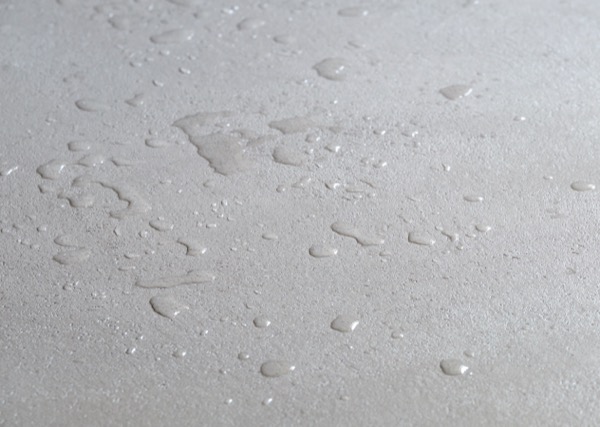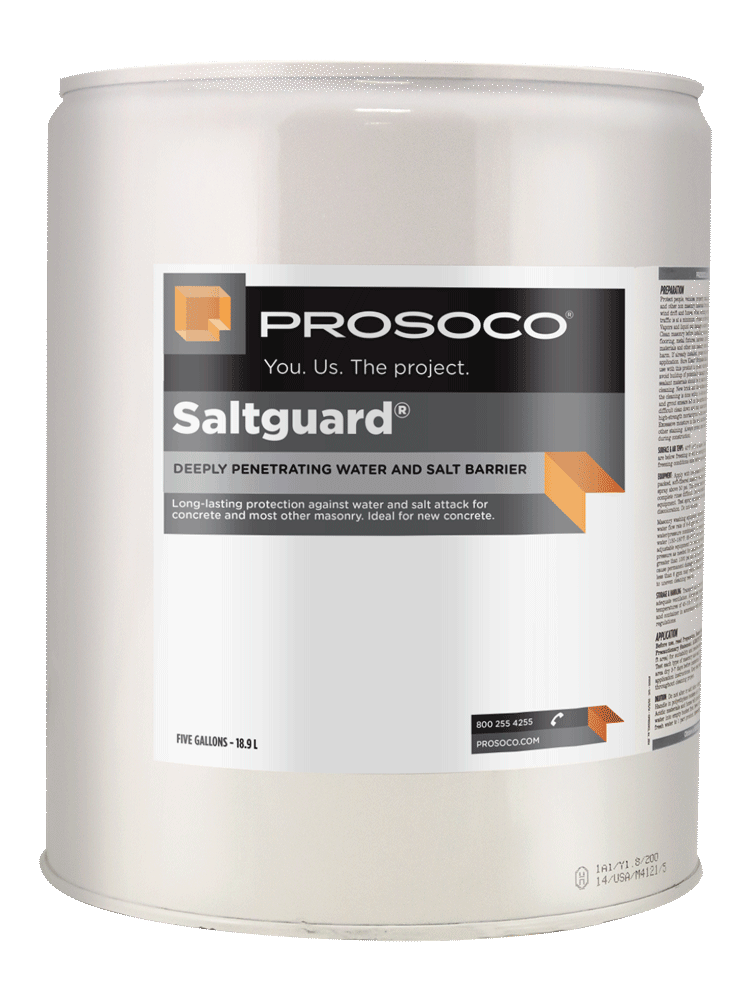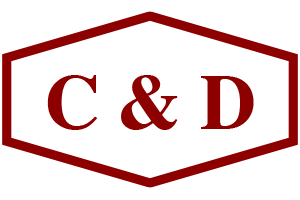Concrete Sealing | Concrete Waterproofing

What potential customers and tenants see everyday as they walk onto a property likely plays a larger role than most realize. While signage, a reception area and other amenities play a large role in growing a customer base or booking a new commercial tenant, one area that may be being overlooked are the common areas and walkways that individuals use to get directly to your location.
Walkways around town or in business centers are typically made of concrete or have had pavers installed. Maintaining these areas, visually and with a consistent maintenance regiment, not only improves the visual appeal, but it also can extend the life of the surface.
While power washing with the correct chemicals can eradicate a large amount of unwanted surface stains, there are ways to protect the concrete from the elements it will endure over it’s lifespan and one way is to apply a concrete sealer.
The main purpose of concrete sealing is to protect the surface of the concrete from corrosion, staining and any other possible external damage. The sealant, once applied, either blocks the pores of the concrete to reduce the absorption of water and salts or it forms and impermeable layer which prevents stains and other threats from passing through.
How a sealer works and is installed will depend on the category of the product. Most sealers com in two main categories — topical sealers (coatings) and penetrating sealers (reactive).
Topical sealers will usually give off some visual enhancement in addition to protecting the surface. Installation is done on a dry, clean surface so that a strong bond can take place between the concrete surface and the sealer. The typical life span ranges from 1-5 years for a topical sealer, however, there are some variables available that offer a longer lifespan.
On the other side of the aisle are penetrating sealers. These can be applied to either a dry or a damp surface and requires finding a proper match regarding the surface’s substrate porosity so that it can effectively penetrate and react to the surface. Once the chemical reaction completes, the active ingredients within the substrate are able to block surface moisture usually without affecting the appearance or traction of the surface. Most penetrating sealers will last a minimum of five years or more.
To go a step deeper, there are several sub-groups that fit in to one or the other types of concrete sealing, usually described by their chemistry.
Below are several popular types of concrete sealer that you likely will come across –
Acrylic Resins:
Acrylic resins form a topical film membrane on the substrate surface. They are available in both water-based and solvent-based formulas, affordable, and generally simple to apply. They are well known to increase perceived visual enhancement (sometimes described as a “wet look”) and can provide good UV protection for colored substrates. Despite being the softest and least lasting of the major sealer categories, price and convenience make acrylic resins a very popular choice for decorative concrete such as stamped concrete and exposed aggregate. Acrylic resins are also commonly used as curing agents for new concrete, and many comply with ASTM C309.
Epoxy/Urethane Systems:
Epoxy/urethane systems are also topical film membranes. They share many of the same characteristics as acrylics, but the performance levels and life span are superior and commensurately more costly with more complex installation requirements. Novolac epoxies are particularly noted for chemical resistance and acid resistance. High-end urethanes are known to be extremely abrasion resistant. Epoxy/urethane systems are frequently used in demanding applications such as factory floors, garage floors, and restaurants, and water-based versions are often used to seal concrete countertops. Epoxy/urethane systems are generally applied only to fully cured existing concrete, although certain epoxy products can comply with ASTM C309.
Silane:

Silane is the smallest molecular compound of commonly available penetrating sealers. Chemically, Silane forms a covalent bond within porous masonry that clots surface pores. Silane is known to be hydrophobic and oleophobic and will only wear away if the concrete surface itself wears away. Noted for very low viscosity, silane is frequently used for sealing dense concrete, such as parking decks, concrete facades, and dense brick. Silane is generally applied only to fully cured existing concrete.
Silicates:
Silicates are another small molecular compound ranging from premium lithium silicates to economical sodium silicates. Chemically, silicates form calcium-silicate hydrate crystals which can densify concrete surfaces and be burnished to develop a polished appearance. Silicates are known to be hydrophobic and oleophobic and will only wear away if the concrete surface itself wears away. Noted for crystallization, silicates are frequently used for polishing concrete floors popular in large format retail outlets. Silicates can be applied to new and existing concrete, although they do not comply with ASTM C309 as a curing agent.
Lithium Silicates:
Lithium Silicates are another version of traditional silicates that are more stable than those caused by volatile conventional silicates, allowing the material to penetrate and react more evenly throughout the concrete for maximum hardening, sealing, and densification. Other silicates absorb moisture and cause ASR, weakening the substrate over time. Lithium silicates are insoluble, providing maximum water resistance. Lithium silicates completely penetrate the surface of concrete to become part of the structure. It achieves these improved characteristics by incorporating the silica into the concrete structure itself. This effectively fills the pores of the material whilst chemically bonding silica with the calcium base of concrete to deliver a non-porous, densified layer that penetrates up to 10 mm into the concrete.[2]
Siliconates:
Siliconates are moderate-size molecular compound. Chemically, Siliconates form a repellent cross-linking membrane barrier within the surface of porous concrete and other masonry. Siliconates are known to be hydrophobic and oleophobic and will only wear away if the concrete surface itself wears away. Noted for extreme water repellence and stain repellence siliconates are frequently used for sealing exterior concrete such as roads and driveways, tilt-up walls, porous brick, and porous stone. Siliconates and organo-siliconates have also been shown to be affective as curing agents for new concrete and certain products can comply with ASTM C309.
Siloxane:
Siloxane is the largest molecular compound of commonly available penetrating sealers. Although not highly reactive, chemically siloxane forms a bond within porous masonry that clots surface pores. Siloxane is known to be hydrophobic. Noted for large molecular structure, siloxane is frequently used for sealing exterior concrete, porous concrete block and porous brick. Siloxane is generally applied only to fully cured existing concrete.
Siloxane is the largest molecular compound of commonly available penetrating sealers. Although not highly reactive, chemically siloxane forms a bond within porous masonry that clots surface pores. Siloxane is known to be hydrophobic. Noted for large molecular structure, siloxane is frequently used for sealing exterior concrete, porous concrete block and porous brick. Siloxane is generally applied only to fully cured existing concrete.
Most high quality concrete sealers have the ability to block 99 percent of surface moisture, if applied correctly.
Find out more about other concrete and pavement services we offer.




